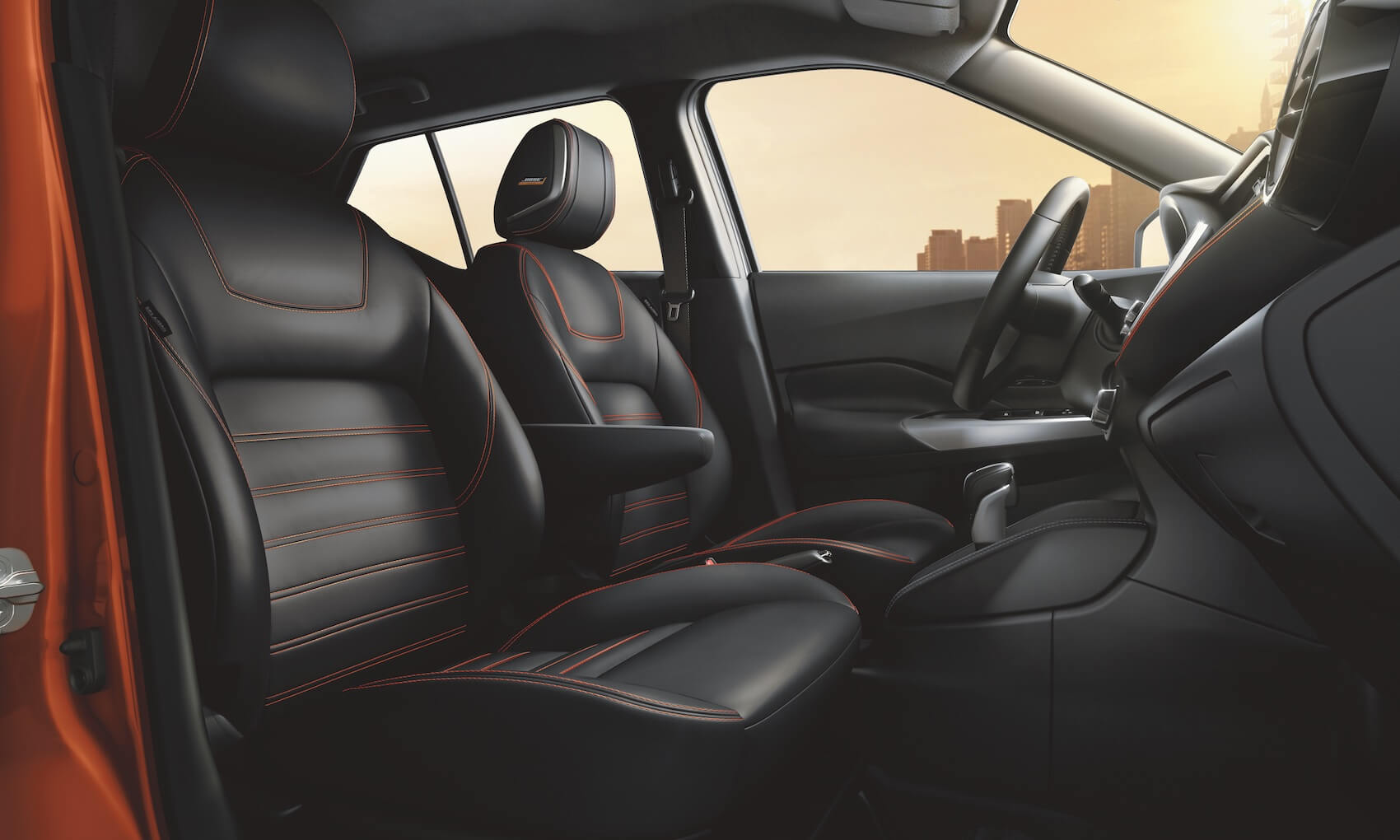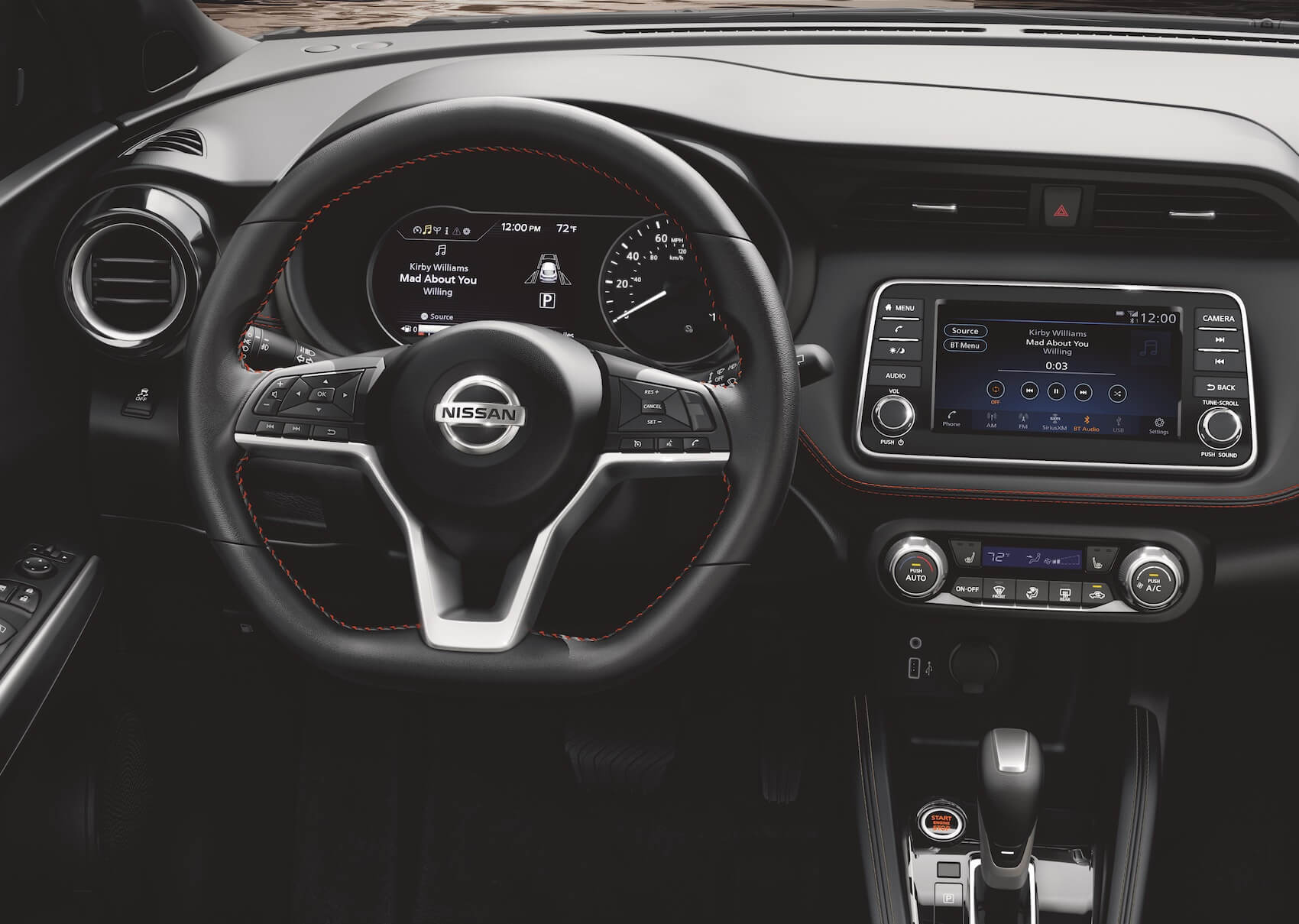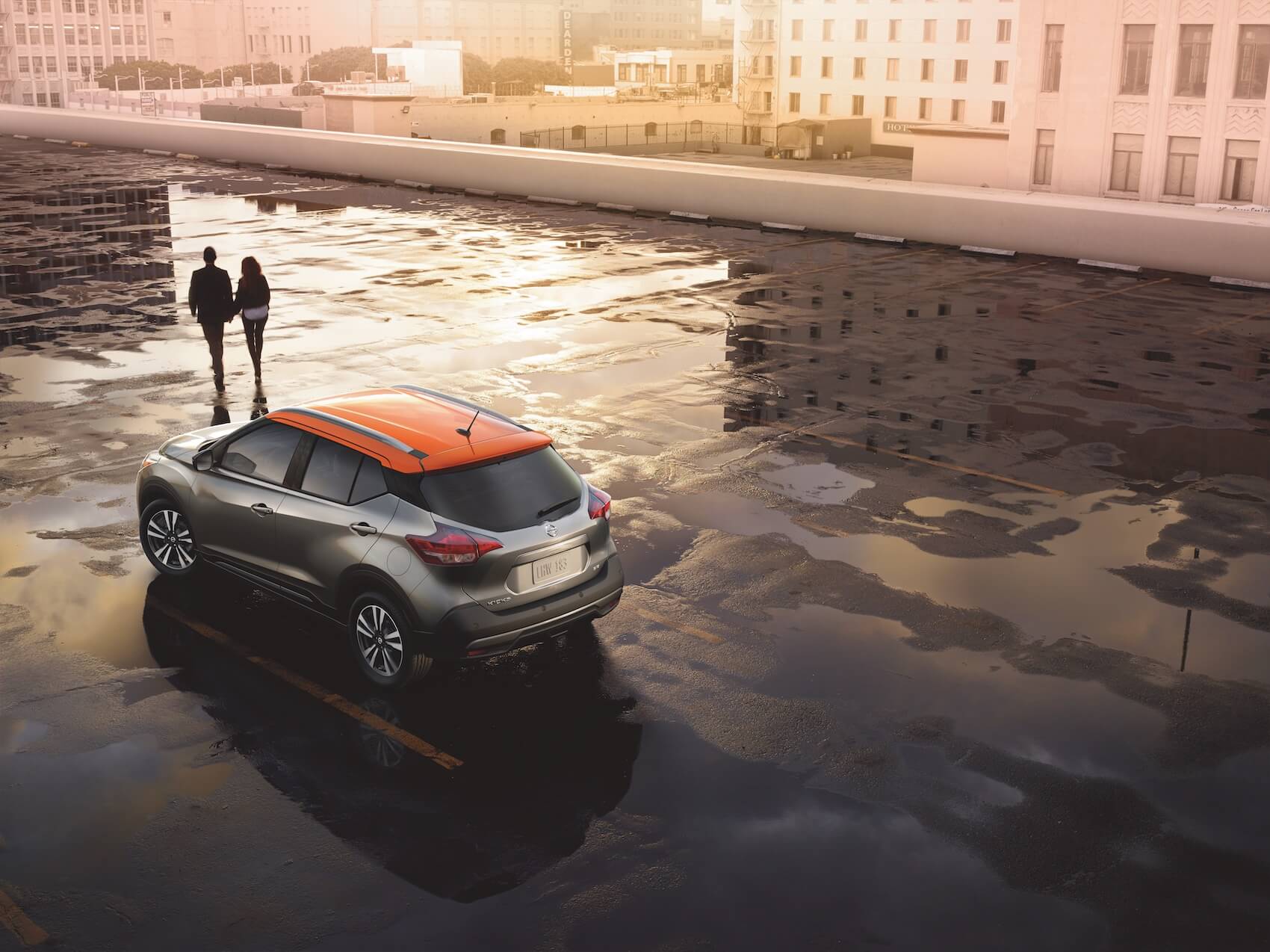Nissan Kicks vs. Hyundai Kona

If you’re on the lookout for a trendy SUV that can enhance your driving experiences throughout Indianapolis, Lawrence, and Speedway, IN, the Nissan Kicks and Hyundai Kona are two vehicles that are sure to be near the top of your list of prospects.
To give you a hand in deciding between the two, our team at Andy Mohr Nissan has drawn up this side-by-side comparison. While both SUVs offer a lot within the categories of comfort, convenience, and safety, only one takes these things to the next level.
Let us help you find our find out which will be the right choice for your lifestyle with this 2021 Nissan Kicks vs. Hyundai Kona comparison!
NISSAN KICKS VS HYUNDAI KONA: QUICK FACTS
First, to start things off, here’s a short list of some features that the Nissan Kicks uses to pull ahead of the Hyundai Kona:
- Zero Gravity Seats: Using cutting-edge technology, these seats are designed to increase your comfort level and reduce fatigue on longer drives.
- Bose® UltraNearfield™ driver-headrest speakers: Available along with the Bose Personal® Plus audio system, this feature provides a personalized listening experience right through the headrest.
- Push Button Start: This standard feature adds a new level of convenience to every drive with the Kicks. When it comes to starting your SUV, you’ll never have to dig your keys out of your pocket again!
|
Nissan Kicks |
vs |
Hyundai Kona |
|
25.3 cubic feet |
Cargo Capacity |
19.2 cubic feet |
|
40.4 inches |
First-Row Headroom |
39.6 inches |
|
43.7 inches |
First-Row Legroom |
41.5 inches |
When it comes to comfort, infotainment, and even interior space, the Kicks already has a pretty clear leg up over the Kona. But let’s look at these vehicles a little closer.
KICKS VS KONA: INTERIOR MEASUREMENTS

Whether you have a growing family or a large group of friends, comfort is sure to be one of the main selling points when weighing your options for your next SUV. Thankfully, both the 2021 Nissan Kicks and Hyundai Kona supply you and your passengers with a lot of space inside their cabins.
In the case of the Kicks, you’ll find 40.4 inches of headroom and 43.7 inches of legroom in the front row. The second row is just as spacious, with 38.5 inches of headroom.
You won’t be able to find quite as much room to spread out in the Kona, however. That’s because its front-row headroom only comes to 39.6 inches and its front-row legroom only comes to 41.5 inches. The Kona continues to fall short of the Kicks, as its headroom measurement in the back row is just 37.8 inches.
When it comes to storage room, the Nissan Kicks offers 25.3 cubic feet of cargo volume when all the seats are upright, while the Hyundai Kona only delivers 19.2 cubic feet of cargo space in the trunk.
This means in the Kicks, it will be much easier to transport groceries, sporting equipment, luggage, or even small furniture for your next move.
READ MORE ON THE NISSAN KICKS INTERIOR
Exterior Dimensions
It sometimes might be easy to overlook the exterior measurements for a vehicle, but these are also important to consider. When driving a compact SUV, you’ll likely want something that walks the line between feeling small without making you feel invisible on the road.
With the impressive ride height of the Nissan Kicks, you’ll still feel completely in control of the road ahead. Where the 2021 Kicks measures in at 63.4 inches overall height, the 2021 Kona falls short with just 61.6 inches.
WHICH SUV HAS BETTER CONVENIENCE FEATURES?

A feature that proves itself to be extremely convenient in the Nissan Kicks is Hill Start Assist. This feature helps when you’ve been parked on a hill and you’re ready to get going again.
It does this by continuing to apply pressure to the brakes while you switch your foot from the brake pedal over to the gas pedal. The result is smooth acceleration in the right direction up the hill, without the possibility of inadvertently rolling backwards. The Kona offers a similar system, as well.
You’ll also be able to start the 2021 Kicks with the push of a button, thanks to the standard Push Button Ignition. Meanwhile, this feature is just an available add-on over in the 2021 Kona.
When you’ve been driving for a long time, only the Nissan Kicks is able to monitor your driving habits and suggest it might be time for a break. The available Intelligent Driver Alertness feature has your back and can sense when you might be driving drowsy and alert you to take a short break.
2021 KICKS VS 2021 KONA: INFOTAINMENT TECHNOLOGY
There are many similarities between the infotainment systems of each vehicle. For instance, they both come standard with a 7-inch display screen through which you can use the standard Apple CarPlay® and Android Auto™ integration capabilities.
Even when you upgrade to the available premium features, you’ll see certain similarities. They each have an available 8-inch screen for even easier access. They’ll also both give you eights speakers with the available premium audio system, though this is where they diverge.
As previously mentioned, the available system of the Kicks also includes the unique Bose UltraNearfield™ driver headrest speakers, to fully immerse you in the music.
NISSAN VS HYUNDAI SAFETY AND VISIBILITY

Safety is another item that’s pretty high on the priority list when car shopping. Both SUVs provide you with features that improve your overall awareness while behind the wheel.
For instance, they each come standard with RearView Monitors that help you better see your surroundings when backing up.
However, the Kicks takes your awareness up a notch with its available Intelligent Around View® Monitor, which provides a composite 360-degree bird’s-eye view of the area directly surrounding your vehicle. A comparable feature isn’t found on the Kona.
INNOVATIVE DRIVER-ASSISTING TECHNOLOGY
The Kicks comes equipped with the Nissan Safety Shield® 360 system, which includes a plethora of features designed to act as your partner and as a second set of eyes on the road ahead. These standard features include:
- Automatic Emergency Braking with Pedestrian Detection: This feature helps you mitigate or avoid collisions by monitoring the objects, pedestrians, and vehicles ahead of you. It then applies brake pressure if it senses you rapidly approaching them.
- Lane Departure Warning: You’ll stay securely in the center of your lane, thanks to this feature; it will alert you as it senses you drifting.
- Rear Automatic Braking: Similar to the standard Automatic Emergency Braking with Pedestrian Detection feature, this one instead monitors what’s going on behind you as you attempt to back up. It will then engage the brakes if it detects an impending collision.
- Blind Spot Warning: With standard Blind Spot Warning, you’ll be able to merge lanes with confidence. It monitors the blind spots at your sides and rear and alerts you if a vehicle is entering them as you attempt to switch lanes.
- Rear Cross Traffic Alert: When you’re pulling out of tight parking spots or driveways, this feature helps ensure that there isn’t a vehicle approaching from behind by monitoring the cross traffic. This way, you’ll know the coast is clear to back up.
- High Beam Assist: The standard High Beam Assist feature automatically toggles between low and high beams, depending on your surroundings. This way, you can have improved visibility when traveling at night without accidentally blinding other drivers.
While the Kona offers some similar features, they don’t all come standard like they do in the 2021 Kicks. Most notably the Blind-Spot Collision Warning system and Rear Cross-Traffic Collision Warning of the Kona are only available in higher trim levels.
KICKS VS KONA: PERFORMANCE ABILITIES

How do these compact SUVs perform when on the road? Well, they have similar powertrains, since they each come standard with a 4-cylinder engine, though they offer different transmissions.
The Kicks comes standard with Xtronic CVT® (Continuously Variable Transmission) which offers unbelievably smooth shifting capabilities. On the other hand, the Kona comes with a 6-speed automatic transmission and offers an available 7-speed Dual Clutch. Neither of these will feel quiet as smooth as the CVT of the Kicks.
The different transmissions also give these vehicles different fuel economy ratings. Thanks to the CVT, the Nissan Kicks is able to achieve EPA-estimated 31 city MPG and 36 highway MPG across all trim levels.1 The best the Kona is able to offer is only 30 city MPG and 35 highway MPG.
Overall, if it’s efficiency and a smooth ride you’re looking for, the 2021 Kicks will likely suit you better than the Kona could.
SHOULD I BUY THE NISSAN KICKS OR HYUNDAI KONA?
As this head-to-head comparison of the Kicks vs. Kona shows, the Nissan Kicks clearly comes out on top. In the end, its attributes in the categories of comfort, convenience, and safety effectively outshine those of the Hyundai Kona.
Now that you’ve seen the results on paper—or screen—you’re ready to find out all the ways that this accommodating SUV can contribute to your regular Indianapolis, Lawrence, and Speedway, Indiana, drives in person.
All you need to do is contact Andy Mohr Nissan to schedule your Kicks test drive at our Nissan dealership!
1 2021 EPA Fuel Economy Estimates. 31 City MPG / 36 Highway MPG / 33 Combined MPG for Kicks. Actual mileage may vary with driving conditions. Use for comparison only.
Read Our Reviews!
| Monday | 8:30AM - 8:00PM |
| Tuesday | 8:30AM - 8:00PM |
| Wednesday | 8:30AM - 8:00PM |
| Thursday | 8:30AM - 8:00PM |
| Friday | 9:00AM - 6:00PM |
| Saturday | 9:00AM - 6:00PM |
| Sunday | Closed |
| Monday | 7:30AM - 6:00PM |
| Tuesday | 7:30AM - 6:00PM |
| Wednesday | 7:30AM - 6:00PM |
| Thursday | 7:30AM - 6:00PM |
| Friday | 7:30AM - 6:00PM |
| Saturday | 8:00AM - 2:00PM |
| Sunday | Closed |
| Monday | 7:30AM - 6:00PM |
| Tuesday | 7:30AM - 6:00PM |
| Wednesday | 7:30AM - 6:00PM |
| Thursday | 7:30AM - 6:00PM |
| Friday | 7:30AM - 6:00PM |
| Saturday | 8:00AM - 2:00PM |
| Sunday | Closed |

